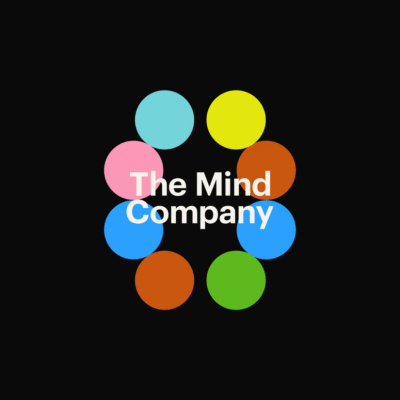For the 12th annual SAS NC State College of Design project, students used generative AI within B2B products in varying industries.
The annual NC State Design Day came back for its 12th year. Like many years before, the future designers brought their “A game” to SAS world headquarters, showcasing innovative concepts, cutting-edge creativity and a bold vision for B2B industries.
The challenge: Using generative AI in B2B products
For this year’s project, the NC State College of Design students were tasked with creating an original B2B application incorporating generative AI to satisfy business and user needs. Using SAS’ tech stack for generative AI, students were asked to understand the data collection and output of generative AI.
The students presented the results of their work. Each group was tasked with understanding their assigned industry’s needs and learning each sector’s work and roles. The result was five product prototypes spanning these five focus industries:
- Retail
- Social media
- Media and entertainment
- Finance
- Education and learning
SAS Head of Product Design Rajiv Ramarajan opened by welcoming attendees and thanking the many stakeholders of this event, including NC State faculty and staff and SAS employees. He also discussed the purpose behind this year’s project assignment and the challenge proposed to students.
“We are witnessing a rapid adoption of generative AI in our daily lives,” Ramarajan said. “But let’s face it. There is still work to develop use cases that harness this technology for business. For this project, we challenged the class to conceptualize applications of generative AI in a business context, specifically, B2B applications.”
NC State Graphic and Experience Design professor Jarrett Fuller, now in his fourth year leading this project, gave insights into the details and processes behind the students’ work before inviting them to present. At the core of their efforts was a shared commitment to applying powerful technology in meaningful ways – specifically, leveraging it to address business use cases and solve real-world problems.
Fuller kicked off his talk with a relatable sentiment: “I’m kind of tired of talking about AI. Anyone else feel similar?” His words resonated with many in the audience, especially those interacting with AI daily. He highlighted a prevalent issue: “Studies show that a lot of time people will use these new AI tools for a couple of weeks and then abandon them.”
He emphasized the need for AI beyond novelty, stating, “We know that AI is a very powerful set of technologies, but it is still in search of some use case, and it is not always actually solving the specific problems that we want it to solve.” By framing the conversation around meaningful implementation, Fuller set the stage for the students to demonstrate how they had tackled this challenge with their innovative designs.
He went on to describe the students’ design process, including:
- Concept development
- Persona creation
- Task flows
- Wireframes
- Visual design and branding
- High-fidelity prototypes
The projects demonstrate how cutting-edge technology, when thoughtfully applied, can address specific challenges in business settings. By focusing on real-world applications, their designs showcased the potential of these powerful tools to streamline processes, enhance customer experiences and solve tangible problems that industries face today.
SAS employees served as mentors throughout the wireframe phase of the project. Their guidance was instrumental as they tested the students’ prototypes and provided valuable feedback, helping the designers refine and enhance their ideas. This collaboration ensured the students’ designs were impactful and polished, contributing to the event’s overall success.
“The AI hype is over,” Fuller stated. “We know these tools are here; they are very powerful, but we cannot lead with them anymore. They are becoming a part of everything else. Adding AI on top of things that already exist is not enough.” His words emphasized the need to move beyond superficial applications of AI and instead focus on integrating it in ways that transform and solve problems.
- Jarrett Fuller
- Rajiv Ramarajan
Student presentations
The sections below highlight the students’ presentations and prototypes with brief overviews, but if you prefer visuals to written words, pause here and tune into the video below to truly experience the incredible work these talented future designers have created.
Retail group: Peruze

Student pitch: Peruze streamlines the search and compassion of commercial real estate properties through customized reports and data visualizations so business owners can focus on what matters most: finding the perfect property.
User persona: Celeste is a clothing store owner looking for a new property to expand her already successful business.
Opportunities:
- Customizable search filters based on business needs.
- Automated and organized search results.
- Compare different types of properties quickly and efficiently.
AI sources:
- Back-end model: Data processing, text classification, feature extraction.
- Front-end model: Natural language processing, summarization, text generation, data visualization.
Walkthrough: Celeste is searching for a new property in Peruze and has already found several viable options. She catalogs a few more great listings and feels ready to generate a comparison report between her favorite Raleigh properties.
Feature highlights:
- Business profile: Users can create a business profile. Responsive AI understands the topics that matter most to users.
- AI-assisted contact: Peruze can draft customized emails, making communication with agents easier than ever.
- Search saved pins: Using saved pins helps localize searches to a specific location.
Future opportunities: Create visual simulations of properties within their context based on users’ business goals with GenAI.
Education and learning group: Mentra

Student pitch: Mentra is a B2B Learning Management System (LMS) that uses generative AI to streamline creating and administering learning paths for corporate learning and development (L&D) managers.
User persona: Steph is a busy L&D manager who creates educational content for multiple departments across her company.
Opportunities:
- Adaptive AI that streamlines content development in real time.
- Optimizing the distribution of learning modules across multiple departments.
- Automated progress tracking for quick insights.
AI sources:
- Recommendation system.
- Topic similarity model.
- Scheduling assistant model.
Walkthrough: Steph sees Mentra’s suggestion to build a new learning path for the UX design team. She quickly and efficiently builds a path by adding modules, assigning additional teams and scheduling its distribution.
Feature highlights:
- Relevant next modules: Mentra suggests relevant next modules based on existing paths and historical data.
- Recommended teams: Teams can be added anytime and are automatically recommended based on new modules.
- Scheduling and setting reminders: Effortlessly schedule learning path assignments and add automated reminders to keep teams informed.
Future opportunities: A mentor system that uses Mentra’s data to pair employees with each other for offline learning opportunities.
Finance group: Noesis

Student pitch: Noesis is a B2B financial desktop application for creating suspicious activity reports (SARs) by detecting anomalous patterns and pre-populating forms as needed. This helps fraud investigators streamline their workday, minimizing the time needed per anomaly.
User persona: Mia, a fraud investigator, is often overwhelmed by anomalies. She seeks to prioritize intuitive interfaces and clear insights to boost efficiency, enhance accuracy and enable proactive detection.
Opportunities:
- Improve efficiency and accuracy while working with real-time data.
- Leverage AI to proactively detect fraud while minimizing false positives.
- Automate document processing with human-centered decision-making.
AI sources:
- Isolation forest: Detects anomalous patterns by identifying large outliers in data sets (unusual financial transactions).
- Deep learning: Translates and automates document processing for financial reports, contracts and regulatory filings.
Walkthrough: To start her day, Mia opens Noesis to continue working on a case from the day before. She receives an alert for an incoming high-priority anomaly and is directed to review the case. Noesis assists with notes, auto-fills the SAR, and walks her through the confirmation process of submitting the form to ensure accuracy.
Feature highlights:
- Case history: Case history shows detailed information on the current and previous anomalies.
- Card carousel: Easily filter transactions to quickly review spending activity by specific card.
- Dashboard filter and sort: Easily organize and prioritize key information to quickly locate similar anomalies.
Future opportunities: View team tasks in real time, send messages and track weekly progress. Automatically generated visualization of time allocation across tasks, anomalies and cases.
Social media group: Iris

Student pitch: Iris is an AI-powered photo and video content creation, editing and publishing tool. It streamlines content optimization, automates editing and provides insights for social media managers and small businesses to enhance their digital presence.
User persona: Hazel is a busy assistant manager who handles café operations. She manages the café’s social media with limited time and no creative experience.
Opportunities:
- Time-saving multi-platform posting.
- Automated content creation tailored to individual needs.
- Keep content organized, scheduled and easily accessible.
AI sources:
- Deep learning image detection: Automatically identifies subjects and objects in images. Detects trends and viral content in social media by recognizing key visuals used to create suggestions for the user.
- Generative adversarial networks: Assist in creating high-quality, detailed images and allow for the precise editing of content used throughout the application.
- Time-series forecasting: Used to record and predict trends, and support marketing engagement planning for posts.
Walkthrough: Hazel needs to make a post for the shop’s new summer promotion. She captures images with her phone in the café. During a break, she quickly creates and easily schedules posts to multiple platforms from her desktop.
Feature highlights:
- Manual creation: Advanced editing is available for users with a more hands-on approach to content creation and photo editing.
- Collaboration: Users can share projects, get feedback on content management and apply suggested changes automatically with AI.
Future opportunities: In-camera AI-assisted content creation and expanded video editing capabilities.
Media and entertainment group: NextUp

Student pitch: NextUp is a coaching assistant that uses generative AI to keep track of stats and observations on the field to help coaches respond with actionable and relevant strategies.
User persona: Sean is an NFL defensive coach for the Los Angeles Rams. He analyzes the opposing team’s recent performance and decides his team’s defensive strategy.
Opportunities:
- Simplified and streamlined play sheet development.
- Integration between video and performance metrics.
- Guided suggestions from qualitative analysis.
AI sources:
- Live sensor data.
- In-video motion tracking.
- Real-time gameplay statistics.
Walkthrough: In preparation for an upcoming game, Sean opens NextUp to build a new play sheet for his team to practice. Later in the game, he uses NextUp to help decide which play to call next.
Feature highlights:
- Player insights: Synthesize performance data to surface trends and abnormalities to help coaches identify areas for improvement.
- Organized in-game play sheet: Interactive play sheets display quick information on plays’ pros and cons.
- Automatic notes: Smart video replays monitor the entire field, not just the center of action.
Future opportunities: Detailed reviews generated by in-game notes, videos and insights, and customized reports for specific coaches and players.
By blending creativity, research and the power of generative AI, these future designers proved that when technology meets thoughtful design, the possibilities for business innovation are endless.







